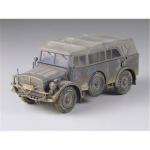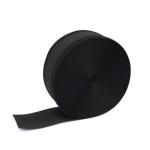Tamiya Military Miniature Series No.52 - 1/35 - S.GL. Einheits Personen Kraftwagen - Horch - 4x4 Type 1A
- Brand: Tamiya
- MPN: Tamiya 35052
- Part #: MDLTMA35052
- UPC:
- Brand: Tamiya
- MPN: Tamiya 35052
- Part #: MDLTMA35052
- UPC:
COMBO DEALS: Frequently Bought Together
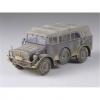



$15.65
$15.65
Features
Specifications
Reviews
Delivery & Pick-up
Returns & Warranty
Popular Military Land Vehicles
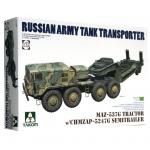

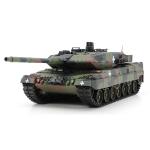
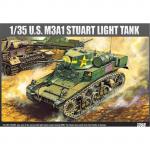
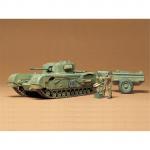
Tamiya Military Miniature Series No.52 - 1/35 - S.GL. Einheits Personen Kraftwagen - Horch - 4x4 Type 1A
- Brand: Tamiya
- MPN: Tamiya 35052
- Part #: MDLTMA35052

Product URL: https://www.pbtech.com/pacific/product/MDLTMA35052/Tamiya-Military-Miniature-Series-No52---135---SGL
Features
As the Reichswehr of the 1920's was very much limited both in size and scope by the terms of the Versailles Treaty, and as the economic situation did not, in any case, allow lavish spending on equipment, most of the transport needs of the army were met by using adapted commercial vehicles. Most widely used of all vehicle types, because they were cheap and very mobile, were personnel carriers based on commercial car chassis fitted with a simple open body of the type known as the Kubelsitzer (literally "bucket-seater"). This type of vehicle, as the name implies, consisted of little more than the chassis and normal front end, as in the normal motor car, with sturdy metal backed seats secured to the chassis frames. Folding canvas screens took the place of doors, and there was a canvas cover, as in a sports car, to be erected in foul weather. Though cross-country performance was very limited, the style of the vehicle was something of a trend setter and small utility personnel carriers have since become common equipment in all armies.
To improve on cross country ability, these early "Kubelwagens" had large section tyres, strengthened springs, and lower axle ratios than their commercial equivalents. During the 1930's, this type of vehicle saw ever wider use with the German army and was one of its most characteristic and distinctive types. These "Kubelwagens" were used as light gun tractors, staff cars, radio cars, command cars, artillery survey vehicles, and signal line layers, as well as serving as personnel carriers for motorized units. Trials held in 1930 had established that the car chassis made by Daimler-Benz, Adler and Wanderer were the best, and these makes predominated in service.
From 1933, when the National Socialist took power and began overt re-armament of the German forces, there was an expansion on an increasing scale with mechanisation of the greatly enlaged army among priority schemes. At that time the various cars on adapted commercial chassis were categorised as follows: Leichte Personnenkraftwagen (light passenger car) approved makeup to 1500cc engine capacity. Mittlerer Personenkraftwagen (medium passenger car) approved make up to 3,000cc engine capacity. Schwerer Personenkraftwagen (heavy passenger car) approved make up to 3,000cc engine capacity.
The light passenger car types were each given a designation according to their intended purpose. Thus Kfz (kraftfahrzeug) 1 was the designation for the basic light personnel carrier; Kfz 2 designated a light signals car (Kraftkahrzeug motor vehicle). The medium vehicles were designated similaryly from Kfz 11 upwards according to function. In the heavy class only the Kfz 21 heavy cross country personnel carrier was produced, as this was the last type to be approved and ordered. It entered service in 1937 and was based on the Auto-Union/Horch EFm chassis, remaining in production until 1940 (after Austria was annexed, the Steyr 1500A was also built to this "heavy" requirement, however also designated Kfz 21). The Auto-Union/Horch EFm model had a V-8 80 hp engine and four wheel drive. Because of its length it had three rows of two seats, seating six men in all. Spare wheels were carried on the side panels flanking the first and second rows of seats. The ordinary commercial tourer car on which the military "kubelwagen" a senior officer's staff car. The Kfz 21 was described in German as the "Schwerer gelandegangiger personenkraftwagen (6-sitzer)" heavy cross country passenger car (6 seater). It had the normal sort of open Kubelsitzer body and a folding canvas top. Overall length was 15 ft 11 inches.
The 'Einheits' Programme
One of the problems presented by the original policy of purchasing commercially based vehicles was the vast diversity of makes taken on to the inventory, and the associated maintenance and spares supply problem. Different makes of engine, transmission, chassis, and so on meant that the stock of spares needed was immense. Thus, once the big armament programme got under way, it was decided in 1934 to replace the range of commercially based chassis with a new range of standardised chassis types. It was intended that the three classes of field car, light, medium, and heavy, would have many parts in common, including suspension units, and that the light and heavy cars would have steerable wheels at the front and back, and would have four wheel drive. This proved to be too ambitious an ideal, even from the start, for the cost and time factor involved in developing such a sophisticated series of vehicles was immense. Only the early vehicles had rear wheel steering, and this requirement was dropped in 1940 to simplify production. Auto-Union/Horch were the main builders of both the medium and heavy passenger cars in the Einheits programme (einheitsfahrgestell: standard motor chassis). The Auto Union/Horch Chassis I for heavy passenger cars (schwerer personenkraftwagen)was produced in 1935. As part of the overall plan it was intended to use this chassis with a rear mounted engine for armoured cars and with a front mounted engine for passenger cars. The original chassis with steerable wheels front and back was designated I a, and the later production chassis (from 1939-40) was designated I b. The chassis featured four wheel drive. There was a torque converter with a limited differential action to prevent winding up in the transmission. The front axle was driven directly from the main gearbox, which included a third differential. There were five forward gear ratios, one reverse, and an auxiliary low gear for cross country work. There was a self locking differential on the rear axle with a normal differential at the front, this arrangement ensuring that all wheels received driving power no matter what the nature of the terrain. There was fully independent suspension, each wheel having two radius arms sprung by two coil springs between the power radius arm and a bracket on the chassis frmae. Shock absorbers were incorporated into the suspension to prevent damage to the steering arms. The four wheel steering facilty proved to be unsatisfactory in the long term. The rear wheel steering was optional, controlled by a dog clutch operated by a lever from the driving position. Using four wheel steering and driving fast, the vehicle was found to slew sideways; thus it was not popular and after some experience four wheel steering was forbidden altogether at speeds over 13 mph. This limitation made the whole facility of such slight value that it was dropeed entirely from the 1940 onward production chassis.
Field car production with tis chassis started late in 1938. Externally all Auto-Union/Horch heavy cars looked alike irrespective of actual chassis model, however. By 1940 the chassis had been simplified considerably, and the Berlin Ford factory was also by then engaged in production. Ford built vehicles had a Ford 3.6 litre V-8 78 hp engine in place of the Horch unit. The late 1940 models lacked recesses in the body and chassis mounted support arms for spare wheels. Production ceased in 1941 in favour of a new scheme under the Schell-Programm which sought to rationalise car production completely. In this scheme the heavy car shared the chassis of the 1.5 ton light truck. Auto-Union/Horch heavy cars remained in service throughout World War 2, however, and were among the most common of German vehicles on every front. The Auto-Union/Horch on the heavy passenger car chassis was used in several roles, and though the layout of the open body followed the old Kubelsitzer idea, all but the very earliest had the added refinement of metal side doors rather than canvas side screens. The following were among the types based on this chassis: Fernsprechkraftwagen (Kfz 23) Telephone Truck. Leichter
Scheinwerferkraftwagen I (Kfz 83) Light Searchlight Truck I Leichter Scheinwerferkraftwagen II (Kfz 83) Light Searchlight Truck II Protzkraftwagen (Kfz 59: Limber (or towing) Vehicle for Light Guns. Mannschaftskraftwagen (Kfz 81): Light AA Vehicle (some with 2 cm Flak Gun mounted) All the above had the open body but differed in function and, in some cased, internal stowage and equipment. In addition, the following were built on the chassis: Sanitaetskraftwagen (Kfz 31): Ambulance Verstarkerfraftwagen (Kfz 24): Maintenance Truck Both of these had a closed van type body.

